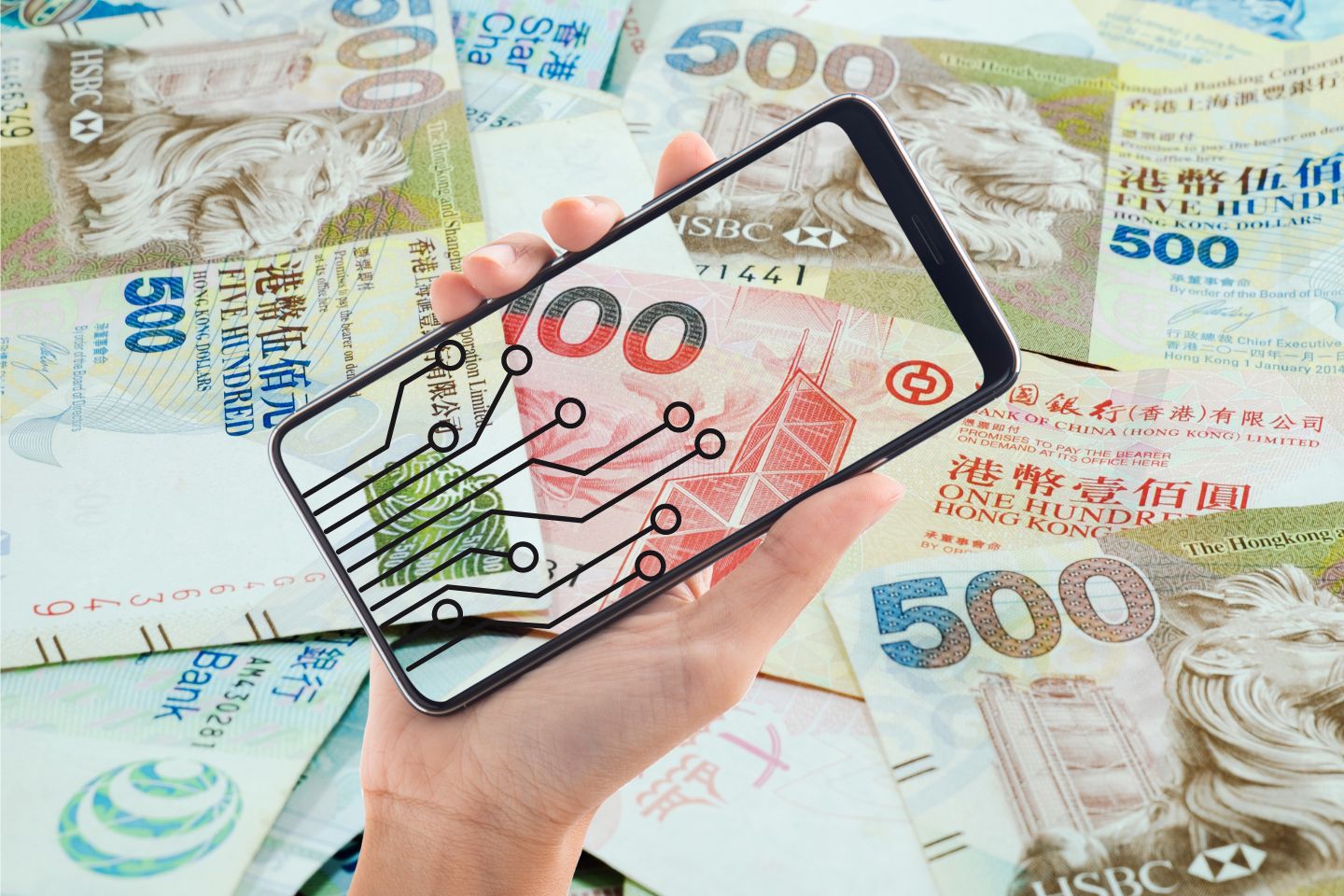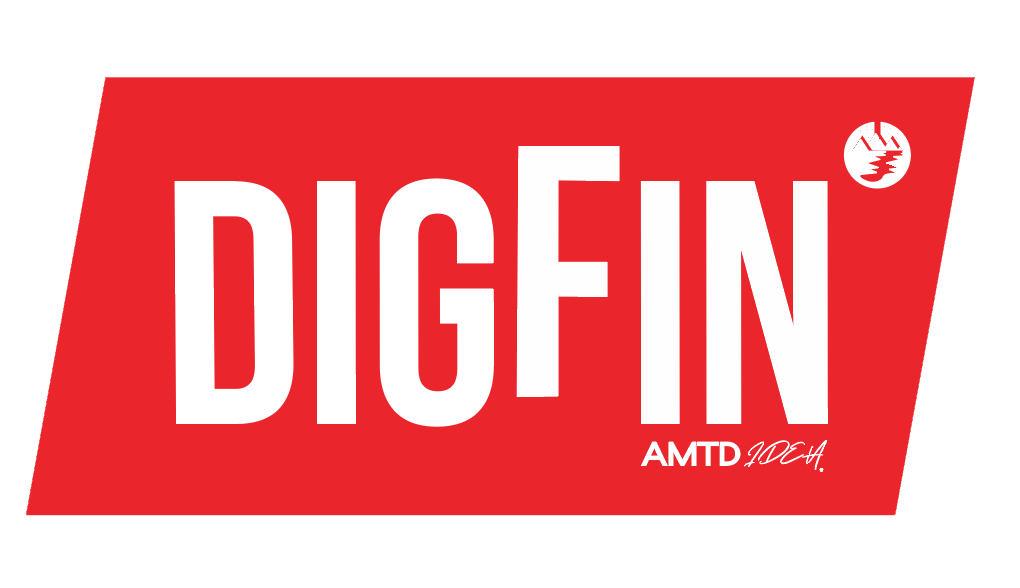Banking & Payments
For Hong Kong, stablecoins go beyond payments
HKMA’s approach to reserves management sets the standard for stablecoins – and tokenization.
Published
1 year agoon
By
admin
Hong Kong is not the first jurisdiction to come up with a regulatory regime for stablecoins. But its response may become the most significant.
That may seem like a strange proposition. The European Union, the United Kingdom, Singapore and Japan have already drawn up proposals. The United States also has a rather loose, permissive regime. What does it matter if a city of 7.5 million people follows suit?
Two reasons. The first is the unique nature of the Hong Kong currency.
The most popular stablecoins – Bitfinex’s Tether and Circle’s USDC – are pegged to the US dollar, which demonstrates the overwhelming demand in the global marketplace is for offshore dollars (or, put another way, for digital Eurodollars).
The Hong Kong dollar is pegged to the US dollar. Therefore, a Hong Kong dollar-related stablecoin is a de facto digital Eurodollar. That’s not the case for digital Singapore dollars, euro, yen or sterling.
While the Hong Kong Monetary Authority’s focus on stablecoin regulation may not have this explicitly in mind – the HKMA is focused on protecting Hong Kong investors and maintaining the stability of the local financial system – it is offering a pathway to a tool with global demand.
Stablecoin OG
The second and related reason is that, unlike all of its peers, the HKMA is the only monetary authority that has stablecoin reserves management built into its DNA.
The Hong Kong dollar was fixed to one US dollar at HK$7.8 back in October, 1983, with HKMA operating a reserves-management system designed to keep that within a tight trading band. HKMA operates a stablecoin tied to the greenback!
The HKMA has kept maintained that peg, despite financial crises and massive attacks on the regime by international hedge funds, for forty years.
This is a rare achievement; one reason why the euro exists is because European monetary authorities continuously failed to keep francs, pounds and marks trading within fairly generous bands. HKMA has a uniquely deep experience that no other regulator can match.
Fine – so the rise of blockchain-based stablecoins puts Hong Kong in a unique position. How does that impact the HKMA’s proposed guidelines?
The short answer is reserves management. To understand that, let’s unpack some of the other features of Hong Kong’s likely regime.
Regulating stablecoins
The reason why the HKMA and other regulators are interested in stablecoins is because they recognize stablecoins may become important parts of payments, both nationally and internationally. They want to set out rules to ensure their citizens can use these safely, and that they don’t disrupt banks or financial markets. Stablecoins are where traditional finance meets blockchain, so regulators are determined to insulate their financial systems from crypto’s ‘Wild West’ risks.
In January, the HKMA and the Financial Services and Treasury Bureau proposed a license and regulatory regime for virtual assets that purport to maintain a stable value relative to one or more fiat currencies.
- Read more:
- Take custody away from crypto exchanges
- Triple-A Payments raises $10m for stablecoin biz
- VC-backed Kiln readies staking-NFT splash in Asia
Finance and fintech figures tell DigFin the proposal is a work in progress, and say the HKMA has been eager for feedback – a stance that is not often the case when authorities consult their industries.
But one thing is clear: the HKMA is only interested in having stablecoins circulating in Hong Kong that reference a currency like the Hong Kong or US dollar, not a commodity such as gold. And algorithmic stablecoins are out.
It helps to compare this to other regimes:
- Hong Kong would legalize only fiat-referenced stablecoins.
- Singapore also legalizes only fiat-referenced stablecoins.
- Japan only recognizes yen-backed stablecoins (so USDC and Tether are illegal).
- The UK would only recognize sterling-backed stablecoins, and require the collateral be held on reserve at the Bank of England.
- The EU has the most flexible of all regimes, recognizing commodity and fiat-backed stablecoins, and recognizes them at the European level, removing these from the purview of national banking regulators.
- US regulation has yet to be formalized.
There is one huge difference between Hong Kong’s proposed regime and all the others. While all governments recognize stablecoins as a form of e-money (stored value facilities, e-payments, etc), Hong Kong’s regime builds on top of the Securities and Futures Commission’s existing licensing regime for virtual-asset trading platforms (VATPs, or crypto exchanges).
It’s safe to assume other regimes will come up with regimes for virtual-asset brokerage, including for retail investors, but they’re building a capital-markets system on top of a payments base, whereas Hong Kong is doing this in the opposite direction.
Beyond reserves
Given the existence of regulated VATPs, with an ecosystem of market makers in place, the HKMA’s regulation of stablecoins is looking beyond simple rules for the reserves.
“They’re not looking just at the reserves behind the stablecoin,” says someone familiar with the HKMA’s thinking. “They’re looking at the price action. How will the issuer [of a stablecoin] work with intermediaries and market makers to maintain price stability? Any point of failure could cause the market to lose confidence in the stablecoin.”
Market makers say this is not technically difficult. But it requires clarity around their agreement with an issuer. The issuer is responsible for minting and burning the stablecoin, so they need a process that is efficient and clear. That’s the precursor to building trust between issuers and the secondary market.
Trust is the fundamental quantity of money. The trust that people have in their currency or in a Eurodollar must extend to the stablecoin tracking it. But what of the existing private stablecoins, USDC and Tether?
USDC and Tether
USDC’s issuer, Circle, tries to portray itself as the compliance-friendly, we-wanna-be-regulated player. Its problem is that there have been times of volatility when USDC lost its peg. Would legal recognition help, and what conditions would regulators insist upon for Circle to tick the box?
Tether is even stranger. Its market cap is now $97 billion. It is the glue that holds together the crypto market. But crypto market makers don’t trust Tether, and regulators certainly don’t like the secrecy and history of lying from the controlling shareholders of Bitfinex.
When Tether is used for payments, people use it as a short-term facilitator to trade other pairs (say bitcoin/Tether, and then Tether/dollars). No one wants to hold Tether. This, say market makers, is why prop shops have proliferated: there’s a huge industry playing hot potato with Tethers. The crypto industry has learned to be comfortable with this, trusting in the speed of 24/7 trading and liquidity instead of trusting the issuer.
That is a dangerous game to play: all it will take is one serious crisis to disabuse such people of such complacency. No financial regulator wants a regime like that. If stablecoins are to be widely used payment tools, retail users as well as corporations or banks must be willing to keep them on a balance sheet.
The HKMA will also have to weigh what it expects as far as redemptions go. Today, stablecoin issuers may promise to redeem at par but they don’t make any promises around price stability in the secondary market. Hong Kong, like other jurisdictions, will insist on legalizing stablecoins that holders can redeem for the full value of the underlying, at any time.
Safety first
But how does the HKMA or any other regulator achieve that? Enforceability is a challenge in every jurisdiction. Hong Kong learned a year ago with the JPEX scam that criminals overseas can easily sell illegal crypto to onshore retail.
There are, however, a few ways for regulators to try to make stablecoins safe. First, Hong Kong is putting know-your-customer and anti-money laundering obligations on issuers.
Second, regulators recognize in general that the more jurisdictions that put rules in place, the better.
Third is to place stablecoin regimes in the context of other rules around virtual assets and blockchain finance. Hong Kong, as already discussed, is ahead of the curve. The HKMA has also just released a consultation paper around custody, which represents the last big missing piece.
Fourth is to use regulatory sandboxes to experiment with a stablecoin’s lifecycle and use case, rather than try to prescribe every rule at the outset. The HKMA is likely to do this before finalizing some of its playbook. This again plays to Hong Kong’s strength of emphasizing capital markets, rather than treating stablecoins as a payment question.
It’s worth taking a quick detour into another related area of regulation that the HKMA is pioneering: capital treatment.
Capital costs
The HKMA is the first major regulator to lay out its thoughts on implementing the Basel Committee’s standards for regulatory capital and treatment of banks’ cryptoasset exposures.
The Basel Committee groups central bank governors under the aegis of the Bank of International Settlements. It proposed central banks require their commercial banks to hold a very high amount of capital against any crypto assets on their balance sheets, including collateral behind stablecoins as well as any bitcoins or other assets used to back exchange-traded funds.
Andrew Fei, a partner at King & Wood Mallesons, a law firm, says the upshot is that virtual assets that are fully backed will incur a capital charge equivalent to the nature of the underlying – that is, it will be treated like an equity or corporate bond type of holding if the token confers voting or economic rights. To achieve this, the stablecoin must not only be 100 percent reserved, but the bank must meet a stringent compliance and documentation process, and engage in regular audits.
Virtual assets that aren’t fully backed or stablecoins that don’t have an airtight stabilization methodology will incur capital charges on the order of 10 or 20 times more, making it unlikely that banks will hold these on their balance sheets.
The fact that Hong Kong is adopting the Basel recommendations shows the direction of travel. It is most relevant for two things: stablecoins, and for the tokenization of real-world assets.
What this suggests is that the HKMA is not thinking of stablecoins as a theoretical payment tool, in a vacuum. The HKMA is thinking of stablecoins that will be used to pay for tokenized assets or other capital-markets functions, such as an ETF.
Reserve assets
Specifically to stablecoins, this will set a bar for Circle and Bitfinex, along with any other stablecoin issuer. If they want their tokens to be used to facilitate trading real-world assets from Hong Kong on blockchain rails, or market those securities to Hong Kong investors, they’re going to need to put reserves on deposit with banks. And banks will need to make sure the paperwork adds up so they avoid punitive capital charges.
Capital charges take us back to the fundamental question that the HKMA is exploring: reserve assets.
What kind of reserves will constitute an acceptable backing for a stablecoin? That a stablecoin tracking the US dollar (say) must be fully backed by US-dollar assets is a given, but what will that composition look like?
The EU has the most specific rules on this, under its Markets in Crypto Assets (MiCA) rules. These say issuers must keep either 30 percent or 60 percent of their reserves as cash held at European banks (the amount depends on the size of reserves and the number of stablecoin holders). Beyond these deposits, issuers may also reserve via national or local government debt or covered bonds.
To mitigate against counterparty risk, MiCA says no more than 10 percent of the reserves may be held at a given bank, where it can’t make up more than 2.5 percent of that bank’s assets. Up to 40 percent of the total reserves must be made available to redemption requests within one day.
The HKMA hasn’t spelled out a regime like this. But people familiar with its thinking say its focus will be on liquidity, ensuring that reserves are placed in instruments that can be quickly redeemed.
One reason the HKMA prefers to work out details in a sandbox is because issuers, although responsible for minting or burning stablecoins, won’t actually hold many of them. The point to issuance is to distribute them via VATPs (brokers or exchanges).
It is not practical to assume an issuer – be it a bank or a licensed money operator – can track and onboard all of the end holders in a crisis situation. Intermediaries could be assigned the role of meeting redemptions, but the HKMA will need a backup plan in case of a systemic crisis.
Work in progress
Capital reserve rules are designed to give banks a buffer in times of distress, but bank runs can still happen. A run on a stablecoin could destabilize traditional finance, so HKMA will continue to experiment before it is likely to license issuers.
Moreover, these rules make it unlikely that banks will want to issue stablecoins. The incentives will push them towards tokenized deposits. These are not market-traded instruments, but represent a relationship between the depositor and the bank. More importantly, whereas a stablecoin must be 100 percent reserved, a deposit is part of the fractional-reserve banking system, even if it’s operating on a blockchain. Today in Hong Kong, the minimum reserve on deposits is 8 percent.
Where banks are more likely to get involved is sponsoring or facilitating real-world asset tokenization. Stablecoins become relevant as likely cash settlement legs (although a central-bank digital currency could play this role, if the HKMA decided to issue its own e-HKD directly from its balance sheet).
The HKMA and its global peers are involved in a grand experiment. Can the trust of their national currencies be translated into stablecoins? That will require sound regulation, but that’s just the first step.
These regimes will need to be battletested. The Hong Kong dollar’s peg to the greenback is trusted not just because the HKMA has rules, but because it’s defended the peg against powerful adversaries.
And the regime will require adoption. It’s not up to central banks to work out use cases, but it is their job to assume that stablecoins could be widely used as payment tools by their citizens. It’s that usage that will test the system. If the regime is too onerous, no one will issue in their jurisdiction, and their investors will flock to illegal crypto products.
This is true of all regulators. What makes Hong Kong interesting to watch is the HKMA, itself a longstanding manager of a ‘stablecoin’, is embedding its guidance within the realm of capital markets. A payments tool is all very well, but money is what you use to pay your debts – and that puts stablecoins in the grownup world of assets and liabilities.
You may like
-


TradFi DLT reality check: what’s working, what’s not
-


The RWA revolution will not be televised, part 2
-


The RWA revolution will not be televised, part 1
-


StraitsX uses SGD stablecoin to connect AliPay, Grab users
-


Grab exploring tokenized payments for its users
-


Payments, crypto & dollars | Yam-ki Chan, Circle | VOX 86
The Future of Cross-Border Payments with VISA Direct
DigFin direct!

Why the RWA revolution will not be televised

Digital B2B Wealth | Alex Ypsilanti, Quantifeed | Ep. 90

Dušan Stojanović: AI in fintech is a compliance story

Mikaal Abdulla is back in Hong Kong with a Boom





